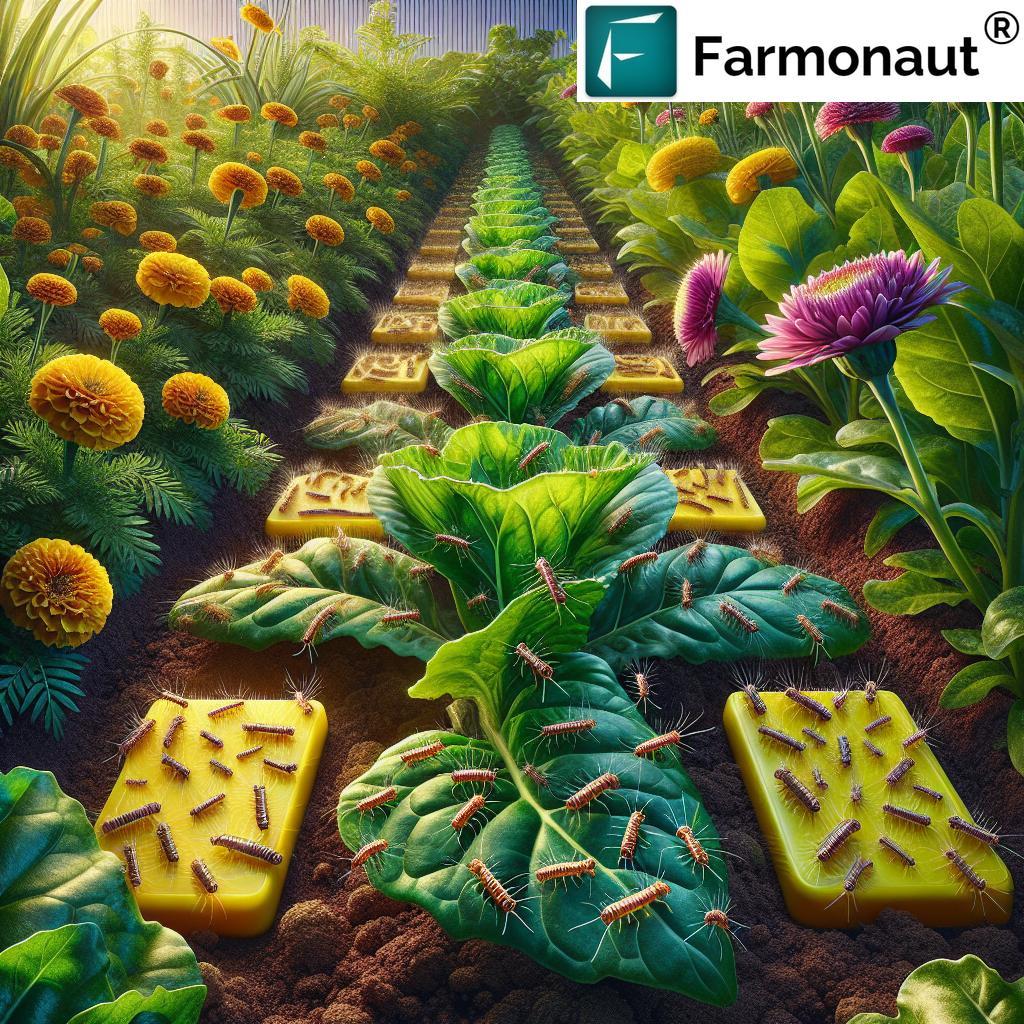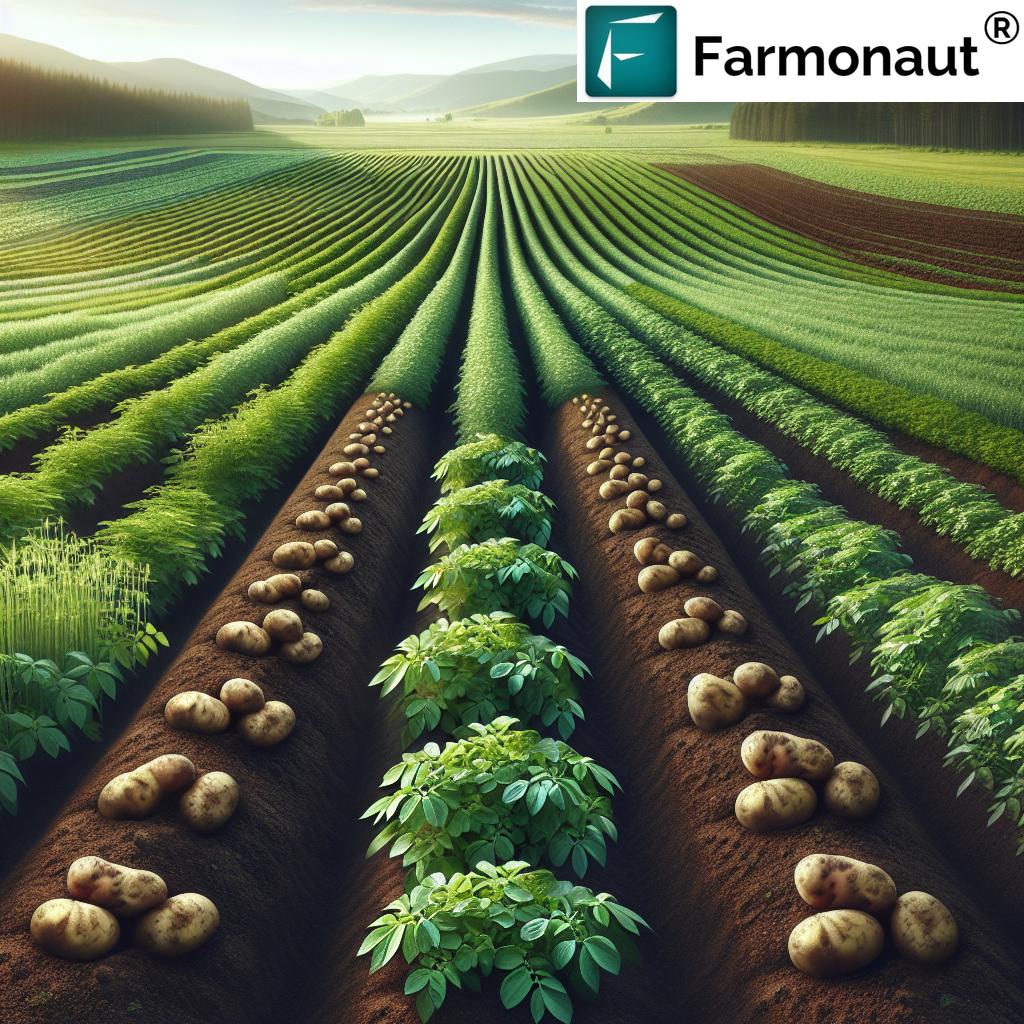Table of Contents
- Introduction: The Future of Farming and Scioto Agritech
- Global Trivia: Precision Agriculture’s Impact
- Understanding Agritech: The New Era of Agricultural Innovation
- Scioto Agritech: Pioneering Growth in 2025
- 7 Farm Agritech Trends for 2025 (Key Table Included)
- Trivia: Forestry Revolution in Smart Farms
- Agritech Farming: Transforming Cultivation for Tomorrow
- Sustainable Forestry: Digital Conservation in Action
- Farmer Agritech Adoption: Driving the Agritech Revolution
- Farmonaut: Satellite-Powered Solutions for the Modern Farmer
- Challenges & Opportunities: The Road Ahead for Farm Agritech
- FAQ: Scioto Agritech, Agritech Farming & The Future
- Conclusion: Embracing the Agritech Wave
Scioto Agritech: 7 Farm Agritech Trends for 2025
The agriculture sector stands at a transformative crossroads, as agritech innovation surges globally. From the heartland of the Midwest, Scioto Agritech is heralding a new age—where advanced systems, sustainable solutions, and data-driven practices enable smarter, greener, and more efficient farming. By 2025, the integration of technology, precision tools, and digital platforms are expected to redefine not just traditional farming but also forestry management and rural agribusinesses worldwide.
In this comprehensive guide, we’re exploring the top 7 farm agritech trends for 2025, drawn from the Scioto playbook and global innovations. Discover how agritech farming—fueled by IoT, sensors, AI, remote sensing, and sustainable practices—is outpacing traditional methods to realize higher yield, improved management, and a resilient, resource-efficient future.
“By 2025, precision agriculture tools are projected to increase crop yields by up to 20% globally.”
Understanding Agritech: The New Era of Agricultural Innovation
Agritech—or agricultural technology—refers to a broad spectrum of advanced tools, techniques, and digital systems that enhance farming productivity, profitability, and sustainability. Unlike traditional agriculture, which often relies on habitual practices, agritech leverages drones, sensors, robotic machinery, big data analytics, AI, and IoT to drive real-time, evidence-based decisions.
- Precision tools for planting, irrigation, fertilization, and pest control
- Smart platforms that monitor field health and resources via remote sensing
- Blockchain-enabled traceability for transparent supply chain management
- AI-driven analytics for weather prediction and crop disease detection
- Digital marketplaces (agritech e) that connect farmers with services and advisory support
This multidisciplinary wave touches all facets of agriculture and forestry, from soil health monitoring to smart harvesting and ecosystem conservation.
Scioto Agritech: Pioneering Growth in 2025
Located in the U.S. Midwest, Scioto Agritech is quickly emerging as a pioneering force in the agritech sector, offering integrated solutions that blend regional knowledge with cutting-edge technology. Their hardware-meets-software approach delivers actionable data and cloud-based platforms to empower farmers, agribusinesses, and forestry management teams.
- Satellite and drone imaging for live field intelligence
- IoT sensors for continuous soil and weather monitoring
- Mobile interfaces enabling remote control of operations
- AI-driven advisory systems for smart decision-making
- Comprehensive forestry management using remote sensing and advanced data analytics
By harnessing these technologies, Scioto not only reduces resource waste and labor costs but also supports sustainable growth and climate resilience.
7 Farm Agritech Trends for 2025: Shaping the Evolution of Global Farming
As we approach 2025, these seven transformative agritech trends are set to define the landscape of agriculture, farming, and forestry:
| Trend Name | Innovative Technology | Estimated Adoption Rate (%) in 2025 | Expected Impact on Yield/Cost | Sustainability Benefits |
|---|---|---|---|---|
| Precision Farming Platforms | AI, Drone & Satellite Analytics, IoT Sensors | 48% | +18% Yield / -13% Input Cost | Resource Optimization, Reduced Runoff |
| Agritech e-Commerce & Digital Platforms | Agritech e Marketplaces, Mobile & Web Apps | 65% | +11% Market Access, -8% Transaction Cost | Shorter Supply Chains, Less Spoilage |
| Smart Irrigation & Water Management | Automated IoT Irrigation, Real-Time Soil/Data | 44% | +7% Water Efficiency, -12% Water Use | Reduced Water Stress, Drought Resilience |
| Genomic Crop Improvement | CRISPR, Biotechnology, Data Analytics | 22% | +19% Yield Potential | Climate Adaptability, Biodiversity |
| Forestry & Conservation Tech | Remote Sensing, AI Fire/Ecosystem Detection | 31% | -30% Resource Waste | Carbon Capture, Habitat Protection |
| Robotics & Autonomous Machinery | Field Robots, UAV Drones, IoT Fleet | 37% | -20% Human Labor Demand | Safer, More Efficient Operations |
| AI-Driven Advisory & Monitoring | Big Data Analytics, Real-Time AI Dashboards | 50% | +15% Decision Accuracy | Reduced Input Misuse, Early Detection |
Breakdown of Key Agritech Trends
- Precision Farming Platforms: Automation, data-driven recommendations, and remote monitoring through satellite, drone, and sensor integration.
- Agritech e-Commerce & Digital Platforms: Direct-to-farmer supply chains and smarter procurement via digital “agritech e” access.
- Smart Irrigation & Water Management: Automated, sensor-controlled irrigation minimizing water waste and maximizing crop resilience.
- Genomic Crop Improvement: Editing and analyzing genetic profiles for higher yields, better nutrition, and climate resilience.
- Forestry & Conservation Tech: Remote monitoring, AI-powered fire detection, and sustainable forestry advisory tools.
- Robotics & Autonomous Machinery: Inclusion of farm robots and UAVs for every phase—ploughing, planting, weeding, harvesting.
- AI-Driven Advisory & Monitoring: Integrated platforms for early pest/disease detection, improved diagnostics, and optimized resource management.
“Forestry innovation in agritech could reduce resource waste by 30% in smart farms by 2025.”
Agritech Farming: Transforming Cultivation for 2025 and Beyond
Agritech farming, with its combination of precision, automation, and sustainability, is redefining every step of crop production. Rather than relying on intuition, modern farmers are enabled by data—optimizing operations from planting through irrigation, harvesting, and market supply.
- Smart Irrigation: Real-time soil sensors and weather-forecasting models automate irrigation and promote climate-smart resource management.
- Autonomous Machinery: Drones, robotic weeders, and harvesters reduce labor and increase efficiency.
- Genomic & Biotechnological Solutions: Advanced gene-editing for crops that are more resilient and nutritious.
- Integrated Pest Management (IPM): AI-powered pest and disease detection that enables timely, targeted intervention.
- Data Analytics: Big data platforms monitor growth, predict yield, and assess risk for smarter decision-making.
These solutions are particularly game-changing for smallholder farmers in rural areas, leveling the playing field through affordable, scalable technological platforms. The convergence of “agritech e” and real-time data greatly increases their access to market and credit, boosts productivity, and ensures food security even amid climate challenges.
Sustainable Forestry: Digital Conservation in Action
The forestry segment is receiving an overdue technological boost. As climate patterns grow unstable and forest fires, biodiversity loss, and deforestation mount as core challenges, advanced systems and remote sensing applications are bringing analytics-driven balance to forest stewardship.
- Remote Sensing & LIDAR: Satellites and drones map changing forest cover, monitor species, and inform sustainable harvesting strategies.
- Early Fire Detection: AI-enabled detection and alert systems reduce damage from forest fires by ensuring swift response.
- Timber & Ecosystem Optimization: Smart scheduling and habitat monitoring tools help sustain timber markets while preserving ecosystem health.
- Carbon Footprinting Solutions: Carbon tracking platforms help measure and manage emissions, guiding sustainability initiatives.
These digital platforms enable data-driven conservation—allowing for smarter reforestation, improved fire management, and precision logging that carefully weighs both economic and environmental demands.
For advanced forest management and plantation monitoring, platforms like Farmonaut’s Crop Plantation & Forest Advisory make satellite-powered intelligence and smart advisory universally accessible—driving optimized yield and environmental compliance for both large-scale and smallholder operations.
Farmer Agritech Adoption: Empowering Growth and Knowledge Networks
At the core of agritech’s impact are the farmers who adopt these technologies. Farmer agritech—the process of on-the-ground integration of smart systems and tools by farmers—determines both market acceleration and true field-level outcomes in 2025.
- Affordability & Access: The growing availability of subscription-based platforms and API integrations—like Farmonaut’s satellite API (read developer docs)—brings advanced analytics to farmers, cooperatives, and even governments at scalable price points.
- User-Centric Design: Platforms now offer local language support, simple mobile apps, and offline features to bridge rural connectivity gaps and minimize barriers to adoption.
- Data Ownership: Empowering farmers to control their data fosters trust and inclusive growth in these ecosystems.
- Extension Services & Knowledge Networks: Community forums, training modules, and in-app advisory features ensure all technologies are leveraged to their fullest.
In this digital era, enabling adoption means building capacity, offering local workshops, and making advisory networks digitally accessible, ultimately ensuring that all smallholder and large-scale farmers benefit from the agritech revolution.
Farmonaut: Satellite-Powered Precision Agriculture for a Better Tomorrow
At Farmonaut, we believe the future of agritech lies in universal, affordable access to precision tools and actionable data. Our platform sets global standards by providing:
- Satellite-Based Crop Health Monitoring: Real-time NDVI, soil moisture, and early crop stress detection, reducing waste and maximizing yield.
- Jeevn AI Advisory: Personalized, AI-driven recommendations—combining remote sensing and analytics for each field and season.
- Blockchain-based Product Traceability: End-to-end transparent supply chains: Learn about our traceability solutions.
- Fleet Management Tools: Optimize usage, maintenance, and operating routes of agri-vehicles at any scale: Explore fleet solutions.
- Carbon Footprint Tracking: Real-time carbon monitoring: See our carbon tools here.
- Large Scale Farm Management: Powering agribusinesses, cooperatives, and rural initiatives: Discover our admin platform.
- Crop Loan & Insurance Support: Satellite-based verifications to ease finance for farmers: More on crop loans/insurance.
Accessible through Android, iOS, and browser-based apps, as well as API integration, Farmonaut is democratizing information so that everyone—from the smallest farmer to the largest enterprise—can optimize production, reduce costs, and actively participate in sustainable agriculture.
Addressing the Challenges: Barriers & Opportunities for 2025 Farm Agritech
While the agritech revolution is undeniable, several challenges can affect pace and scale of adoption across global and rural landscapes:
- Infrastructure Gaps: Reliable internet, power, and logistics remain a hurdle in some regions.
- Data Security & Ethical Concerns: With more platforms collecting data, robust frameworks are critical for security and user privacy.
- Climate Change Uncertainties: Ever-changing weather and environmental patterns require that models and solutions remain adaptive and continuously improved.
- Cultural & Behavioral Barriers: Earning the trust and willingness of farmers to embrace new practices demands focused community engagement and demonstrable benefits.
The coming years call for ongoing investment, innovation, and extension network growth from all sector players—technological, governmental, and community-based—to ensure maximum inclusive impact.
FAQ: Scioto Agritech, Farm Agritech Trends & the Evolution of Agriculture in 2025
1. What is the primary focus of Scioto Agritech for 2025?
Scioto Agritech is dedicated to integrating advanced solutions—like satellite analytics, AI-driven recommendations, and IoT-powered field monitoring—into everyday farming and forestry practices. Their focus is on scalable, user-friendly platforms that optimize resources and enhance sustainable agricultural growth.
2. How do precision farming tools benefit farmers?
Precision farming tools empower farmers to make evidence-based decisions using real-time data on soil, crop, and weather. This optimizes input use, increases yields, and reduces waste, supporting both profitability and sustainable land stewardship.
3. What role do digital platforms (agritech e) play in agriculture?
Agritech e platforms connect farmers directly with suppliers, advisors, and markets, breaking down traditional intermediary barriers. They enable direct access to tools, resources, and support, improving efficiency and allowing for better market prices.
4. How is forestry being impacted by the agritech revolution?
Forestry benefits from advances like remote sensing, AI-powered fire detection, and smart timber management—leading to safer operations, ecosystem conservation, carbon tracking, and more sustainable timber yields.
5. What can smallholder farmers do to adopt agritech affordably?
Smallholder farmers can leverage low-cost, subscription-based platforms, utilize mobile or web-based advisory apps, and join local or digital knowledge-sharing networks. Farmonaut’s services, for instance, offer affordable, scalable access to satellite-powered insights.
6. Are there solutions for tracking and reducing carbon emissions in farming?
Yes, robust solutions like Farmonaut’s carbon footprint tracking allow farmers and enterprises to monitor emissions and make improvements for compliance and sustainability.
7. Can API integrations power custom agricultural solutions?
Absolutely. APIs (like those from Farmonaut) allow businesses, governments, and developers to embed precision agri-data and analytics into their existing platforms, ensuring rapid, tailored innovation at scale.
8. How does AI drive smarter decision-making in farming?
AI systems analyze vast datasets—satellite images, weather reports, historical trends—to provide personalized recommendations for planting, watering, fertilization, and pest management, driving both cost savings and higher yields.
Conclusion: Embracing the Agritech Wave with Scioto & Beyond
The landscape of agriculture in 2025 and beyond is being shaped by Scioto Agritech and a broader revolution in farm agritech. From the rise of digital platforms and automation to AI-powered advisories and precision systems, these innovations are not just enhancing productivity but ensuring sustainability and resilience in the face of global challenges and environmental change.
With agritech farming now accessible to farms and forests of all sizes—and deep-rooted adoption from smallholder to enterprise level—the stage is set for a smarter, greener, and more inclusive agricultural future worldwide. Platforms like Farmonaut are validating that technology—when paired with robust data, continuous support, and true farmer engagement—delivers on the promise of higher yields, more secure food supplies, and a sustainable relationship with our land and resources.
As we move forward, let’s enable every farmer, agribusiness, and forestry manager to harness the full power of agritech—ensuring not just higher production but also a better, balanced world for the generations to come.












